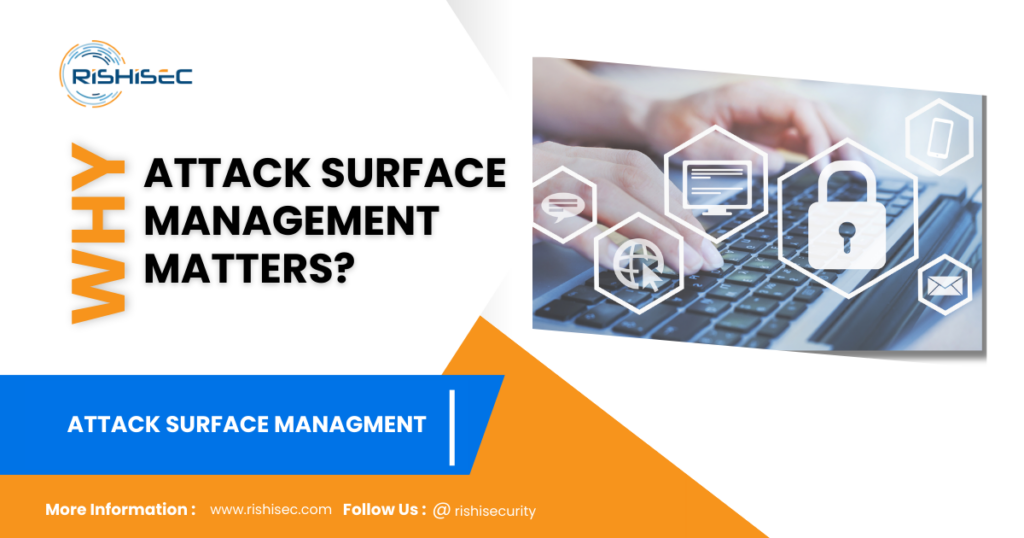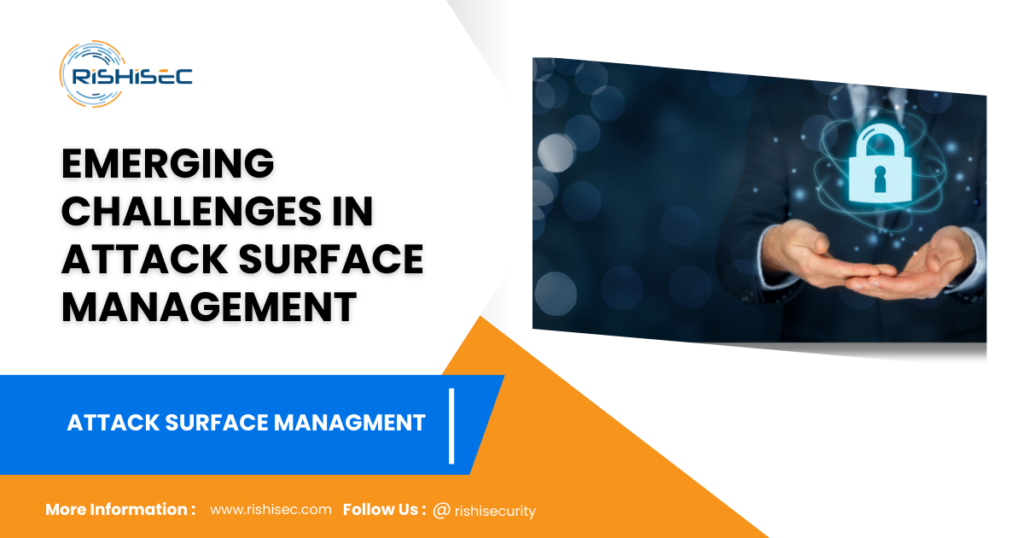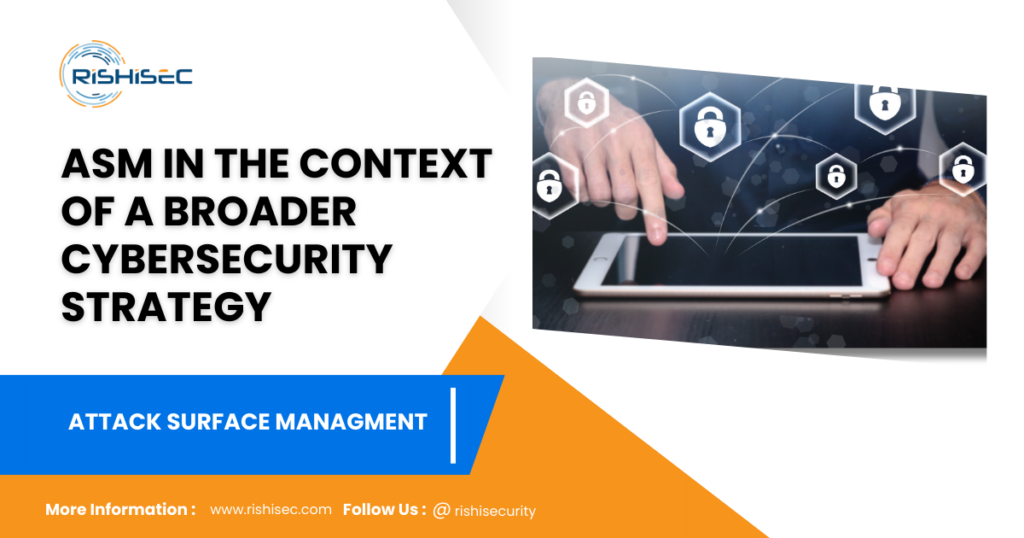Contents
- 1 Attack Surface Management
- 2 Why Attack Surface Management Matters
- 3 The Expanding Attack Surface: A Growing Challenge
- 4 Key ASM Strategies for Securing Your Enterprise
- 5 Emerging Challenges in Attack Surface Management
- 6 Best Practices for Effective Attack Surface Management
- 7 ASM in the Context of a Broader Cybersecurity Strategy
- 8 Conclusion: ASM as a Strategic Imperative
- 9 CTA
Attack Surface Management
In today’s hyper-connected digital landscape, managing your organization’s attack surface has never been more crucial. Cybersecurity threats have evolved, becoming more sophisticated, and it’s imperative for organizations to fully understand and safeguard every digital entry point. This is where Attack Surface Management (ASM) plays a pivotal role.
ASM goes beyond traditional cybersecurity strategies by providing visibility into all known and unknown assets, ensuring comprehensive security coverage. As the digital attack surface grows, so do the opportunities for cybercriminals. To counter these threats effectively, organizations must rethink their security approach, with ASM serving as the cornerstone of that strategy.
Why Attack Surface Management Matters

Attack Surface Management Matters
Attack Surface Management helps organizations gain real-time visibility into every asset—whether it’s known or unknown—that could be vulnerable to attacks. Traditional security approaches focus primarily on known assets, but the rise of cloud adoption, remote work, shadow IT, and third-party integrations means organizations often have blind spots. These blind spots are prime targets for cybercriminals, and failing to address them could lead to catastrophic breaches.
In fact, according to a 2023 report from [Insert Source], over 70% of cyberattacks target unmonitored or unknown digital assets. These could range from misconfigured cloud databases to overlooked Internet of Things (IoT) devices. This is why ASM is no longer a “nice-to-have” but a must-have in any modern cybersecurity strategy.
The Expanding Attack Surface: A Growing Challenge
The explosion of digital assets, hybrid work environments, and cloud computing has expanded attack surfaces far beyond what most organizations can track manually. It’s no longer enough to focus on internal networks; companies must protect every corner of their digital ecosystem, including external-facing applications, partner networks, and vendor systems.
The challenge? The more extensive your digital presence, the harder it is to identify and secure every potential entry point. For organizations that are scaling rapidly, this can lead to vulnerabilities that remain undetected until it’s too late.
To put it into perspective, every connected device, every line of code, and every third-party API increases your attack surface. Cybercriminals are adept at exploiting these exposures, making continuous monitoring and real-time discovery critical components of an effective ASM strategy.
Key ASM Strategies for Securing Your Enterprise
- Attack surfaces are always evolving. New vulnerabilities can appear if new technologies are integrated, when infrastructure changes, or even after routine system updates. ASM tools actively monitor your digital assets, such as cloud infrastructure, third-party services, IoT devices, and shadow IT. Because of this 24/7 vigilance, you are always aware of new vulnerabilities or exposures. Moreover, regular monitoring supports asset discovery by continuously mapping and updating your organization’s attack surface.
- Risk Prioritization and Contextualization
Not all vulnerabilities are equal, and a strong ASM strategy does more than just flag issues. Instead, it places them in context, helping security teams focus on the most critical threats. This way, organizations can concentrate on fixing high-risk vulnerabilities that could cause significant damage, rather than wasting time on low-risk issues. For example, a vulnerability in a public-facing web application demands faster attention than one on a retired internal server. Thus, this kind of prioritization makes ASM tools invaluable for security teams with limited time and resources. - Automated Threat Intelligence Integration
The cyber threat landscape is constantly evolving, with new attack vectors emerging daily. By integrating real-time threat intelligence feeds, ASM platforms offer organizations insights into emerging threats. This is crucial as the threat landscape changes rapidly, and proactive organizations need to stay ahead of these developments. Threat intelligence can be used to preemptively address vulnerabilities that cybercriminals are currently exploiting in other industries, reducing the chances of falling victim to the same tactics. - Third-Party Risk Management
Many organizations overlook the risks posed by their third-party vendors and partners. However, attackers often target these relationships as a way to access larger enterprises. ASM solutions help mitigate these risks by continuously monitoring vendor networks and identifying potential security gaps. This is especially critical in industries where sensitive data is shared across multiple platforms, such as healthcare, finance, and retail.
Emerging Challenges in Attack Surface Management

Emerging Challenges in Attack Surface Management
While ASM provides a robust defense against external threats, there are still several challenges to overcome. For instance, one of the key difficulties is the complexity of tracking assets across hybrid environments, which often include on-premises, cloud, and multi-cloud systems. In addition, many organizations struggle to ensure compliance with global regulations like GDPR and CCPA while managing an expansive attack surface.
Therefore, a comprehensive ASM solution must address these challenges head-on by offering both flexibility and scalability. Furthermore, the most effective ASM tools provide seamless integration with existing security solutions, automated updates for newly discovered assets, and robust reporting features to ensure compliance with industry standards.
Best Practices for Effective Attack Surface Management
- Maintain an Accurate Asset Inventory: Ensure that you maintain a comprehensive and up-to-date inventory of all your digital assets, including cloud instances, mobile devices, and IoT. An outdated asset inventory is one of the leading causes of security breaches.
- Automation is Key: Leverage automation in your ASM tools to detect new assets and vulnerabilities in real-time. Manual processes are prone to error and often leave gaps in coverage.
- Cross-Team Collaboration: Attack surface management is not just an IT issue; it’s an organizational concern. Encourage collaboration across departments, ensuring that everyone—from the C-suite to technical teams—understands their role in securing the company’s digital assets.
- Frequent Vulnerability Scanning: Regular vulnerability scans help to identify potential risks before they can be exploited. Combining this with real-time threat intelligence can ensure that security teams are focusing on the most pressing threats.
ASM in the Context of a Broader Cybersecurity Strategy

Implementing ASM should be viewed as part of a broader, multi-layered security approach. It works best when combined with other cybersecurity measures such as zero-trust architecture, endpoint detection and response (EDR), and robust incident response plans. Organizations that fail to implement an effective ASM strategy risk leaving themselves exposed to significant attacks that could have been prevented with better visibility and real-time response mechanisms.
Conclusion: ASM as a Strategic Imperative
In conclusion, ASM is essential for any organization looking to maintain a robust security posture. The sheer complexity of modern attack surfaces requires advanced, automated tools that can continuously monitor, discover, and prioritize vulnerabilities. With an effective ASM strategy, you can reduce your organization’s risk and proactively defend against an ever-evolving threat landscape. As cyber threats continue to escalate, a strong focus on attack surface management is not just beneficial—it’s critical.
CTA
Ready to safeguard your digital frontier? Sign up for a free trial of SentryCA, the most comprehensive ASM solution tailored to your business needs. Discover how real-time monitoring and automated threat intelligence can give your organization the upper hand in today’s ever-evolving cyber landscape. Gain deeper visibility, eliminate blind spots, and secure every corner of your attack surface before the next threat strikes.
You may also like reading this post, The Importance of Continuous Monitoring in Compromise Assessments


